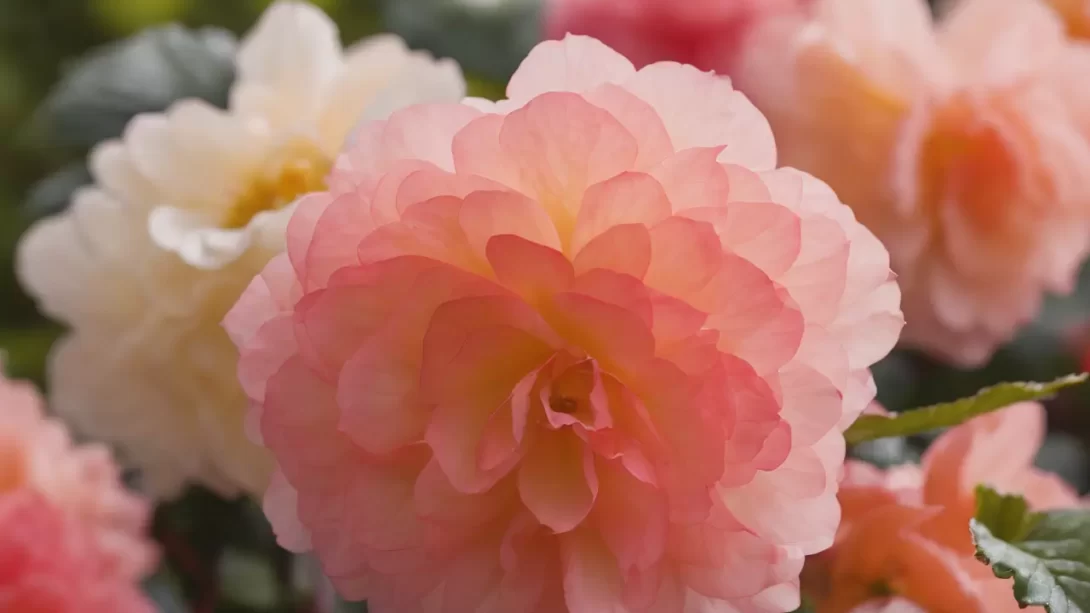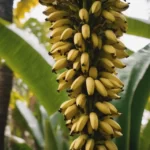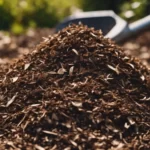Deadheading begonias is a crucial aspect of their care, enhancing both their beauty and health. This process involves removing spent flowers, encouraging the plant to produce more blooms and maintain vigor. For gardeners, deadheading is a simple yet effective way to extend the flowering period of begonias and keep them looking their best. This article provides a comprehensive guide on how to deadhead begonias, tailored to the needs of both novice and experienced gardeners.
Begonias
Begonias are a diverse group of plants, popular for their beautiful flowers and foliage. Common types include tuberous, fibrous, and rhizomatous begonias, each with unique care requirements. Tuberous begonias are known for their showy flowers, fibrous begonias for their robustness and continuous blooms, and rhizomatous begonias for their interesting leaves. Understanding the type of begonia you have is crucial as it influences the deadheading approach. These plants generally bloom from early summer to frost, with deadheading playing a key role in prolonging this period.
Preparing to Deadhead
Before you begin deadheading, gather the necessary tools. Small, sharp pruning shears or scissors are ideal. For delicate begonia varieties, you might prefer to use your fingers to pinch off the spent blooms. Ensure that your tools are clean and sterilized to prevent the spread of disease. This can be done with a simple wipe-down using rubbing alcohol or a disinfectant. Wearing gloves is optional but recommended for protection, especially if you have sensitive skin. With your tools ready and clean, you’re set to start the deadheading process, helping your begonias to thrive and bloom abundantly.
Identifying Spent Blooms
Successful deadheading begins with the ability to identify spent blooms. On begonias, a spent flower typically appears wilted, discolored, or dry. These are the blooms that have finished their lifecycle and are no longer vibrant. In contrast, new buds are more rounded, firm, and often have a different color or sheen compared to the older, spent flowers. It’s important to carefully distinguish between these, as accidentally removing new buds can reduce the plant’s blooming potential. Regular inspection of your begonias will help you become familiar with their blooming patterns, making it easier to spot the flowers that need removal.
Deadheading Techniques
The technique for deadheading begonias varies slightly depending on the type:
- Tuberous Begonias: These have larger blooms and stems. Use pruning shears or scissors to snip the stem of the spent flower at its base, being careful not to damage nearby buds or foliage.
- Fibrous Begonias: These often have smaller, more delicate stems. You can gently pinch off the spent blooms with your fingers or use small scissors. Make the cut just above the next leaf or bud junction.
- Rhizomatous Begonias: For these, focus on the flower stalks. Once the flowers have faded, cut the stalk down at the base where it emerges from the leaves or rhizome.
In all cases, aim for clean, sharp cuts to minimize stress on the plant. Be gentle to avoid damaging the healthy parts of the begonia. Regular deadheading, especially during the peak blooming season, will encourage continued flowering and contribute to a more robust and attractive plant.
Aftercare and Maintenance
After deadheading begonias, it’s important to provide proper care to ensure continued growth and blooming. Water the plants regularly, keeping the soil moist but not waterlogged, as begonias prefer consistent moisture. Apply a balanced, water-soluble fertilizer every few weeks during the growing season to provide essential nutrients. Monitor the plants for any signs of stress or disease, and adjust care as needed. Ensure they are in a location with suitable light conditions; most begonias thrive in bright, indirect light. Regular grooming, beyond deadheading, such as removing yellowed leaves or trimming unruly growth, helps maintain the plant’s health and appearance.
- New Liquid Fertilizer for: Begonia Species indoor and outdoor
- This food for plants belongs to the latest generation of fertilizers, for healthy and bright green leaves, stable branches, strong bud formation, balanced rooting, very beautiful flowers.
- Very rapid effects, can be administered via the roots and as a foliar fertilizer. For 60-125 liters of ready to use liquid fertilizer
- Content: 250 ml, works as an economical concentrate. Simple dosage with the help of the cap.
- The fertilizers from the GREEN24 PROFI LINE were developed by gardeners of various departments and were evolved and produced based on the current knowledge in the field of propagation and cultivation of plants.
Common Mistakes to Avoid
When deadheading begonias, there are several common mistakes to avoid:
- Over-Pruning: Removing too many flowers, including new buds, can stress the plant and reduce blooming.
- Improper Tool Use: Using dull or dirty tools can damage the plant and introduce disease.
- Incorrect Identification of Spent Blooms: Mistaking new buds for spent flowers can result in a decrease in the plant’s flowering potential.
- Neglecting Plant Health: Focusing solely on deadheading without maintaining overall plant care can lead to poor growth and health.
Avoiding these mistakes will ensure your begonias remain healthy and vibrant.
Conclusion
Deadheading begonias is a simple yet essential practice for any gardener looking to maximize their plant’s blooming potential. By properly identifying spent blooms, using the right techniques, and providing appropriate aftercare, your begonias will continue to flourish and brighten your garden. Regular maintenance, coupled with an understanding of common pitfalls, will help you achieve a lush, vibrant begonia display. Remember, the key to a thriving garden is not just in the tasks we perform, but in the ongoing care and attention we give to our plants.




